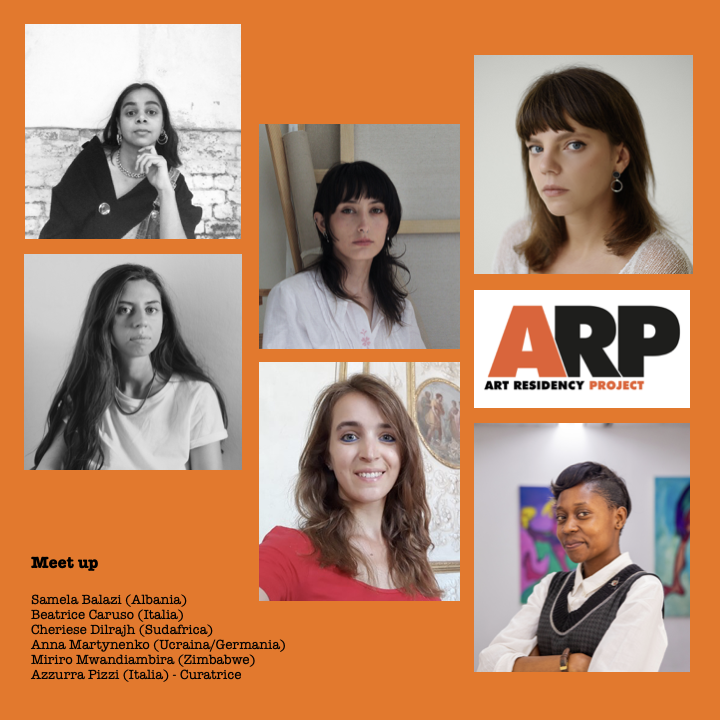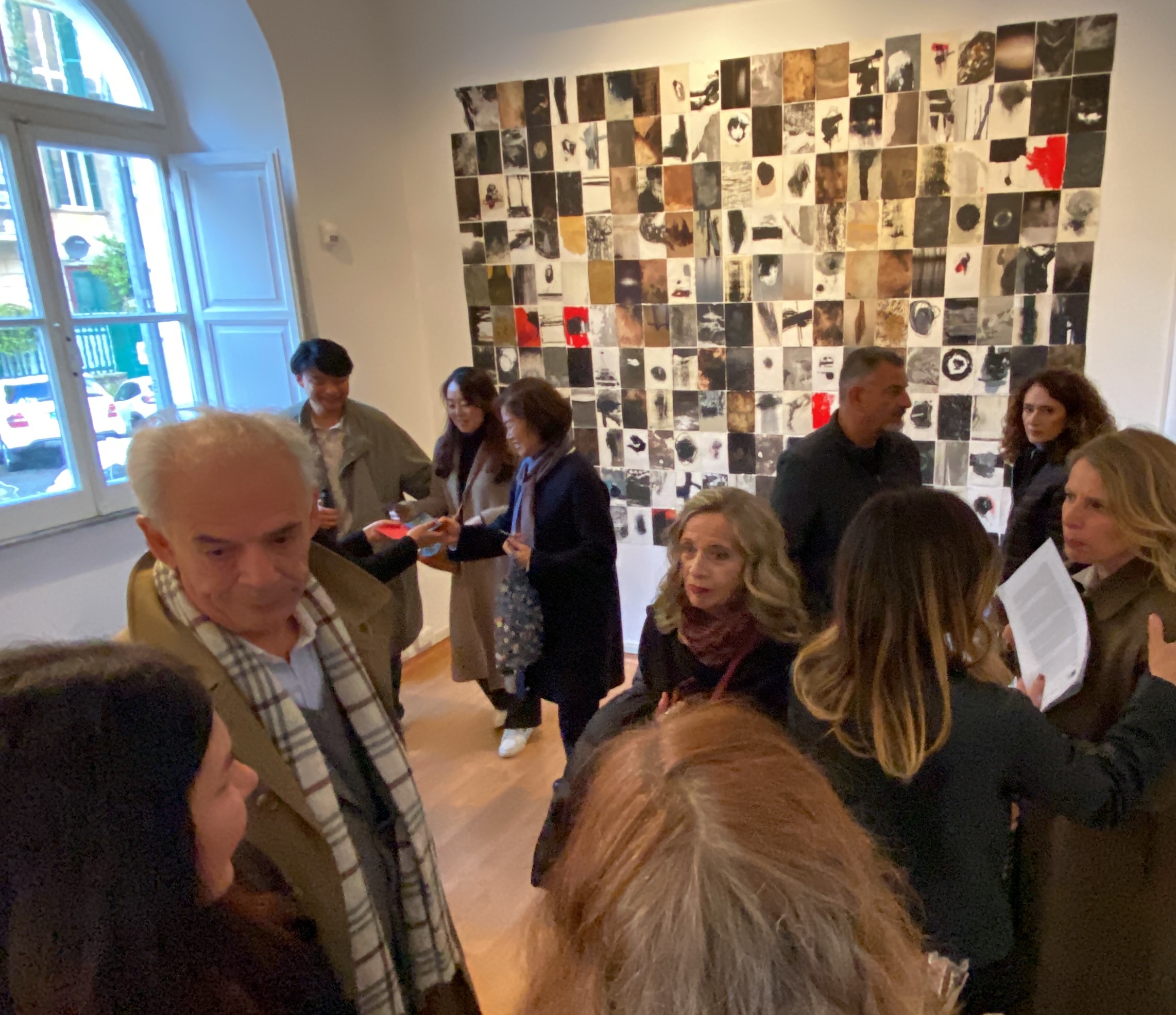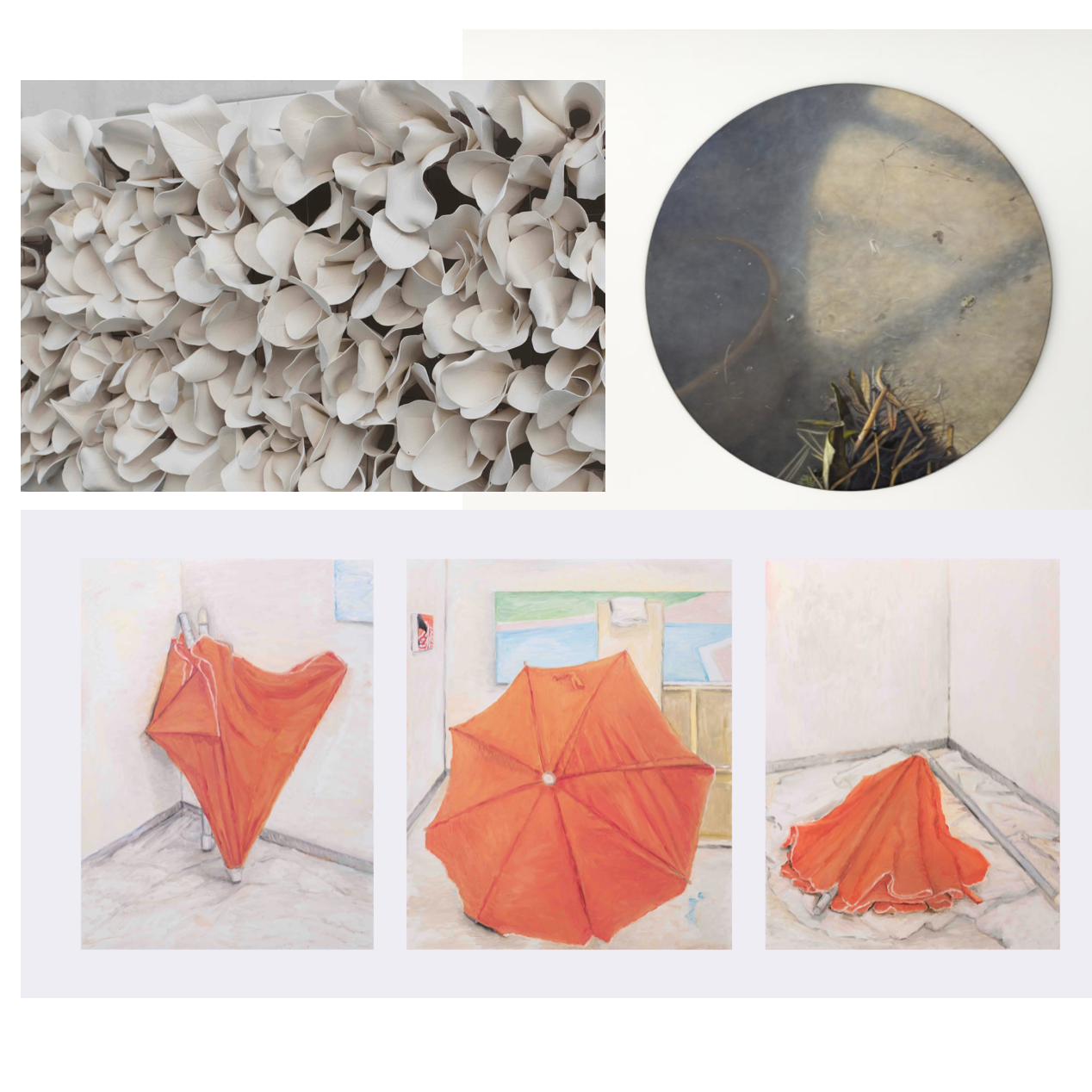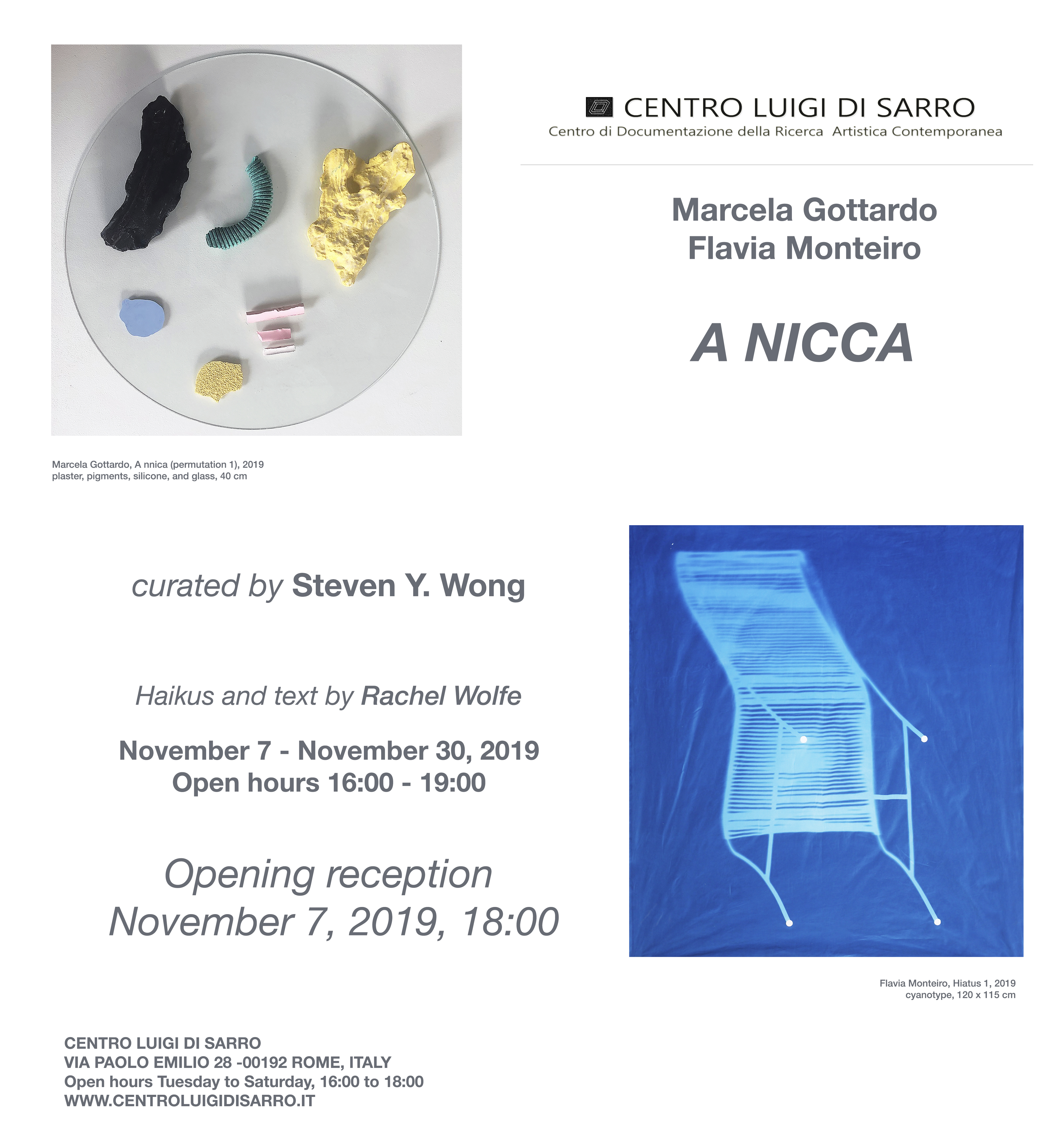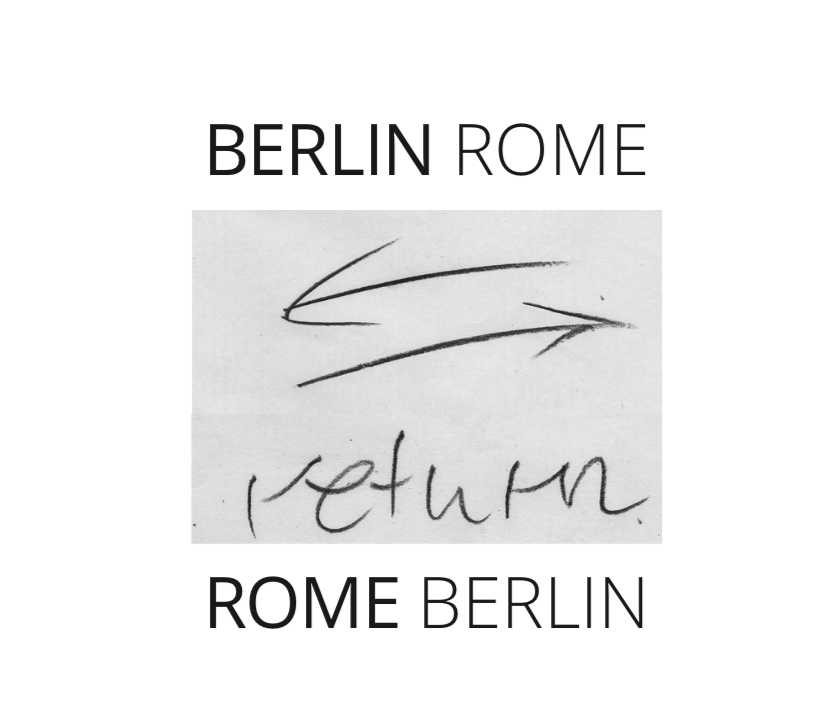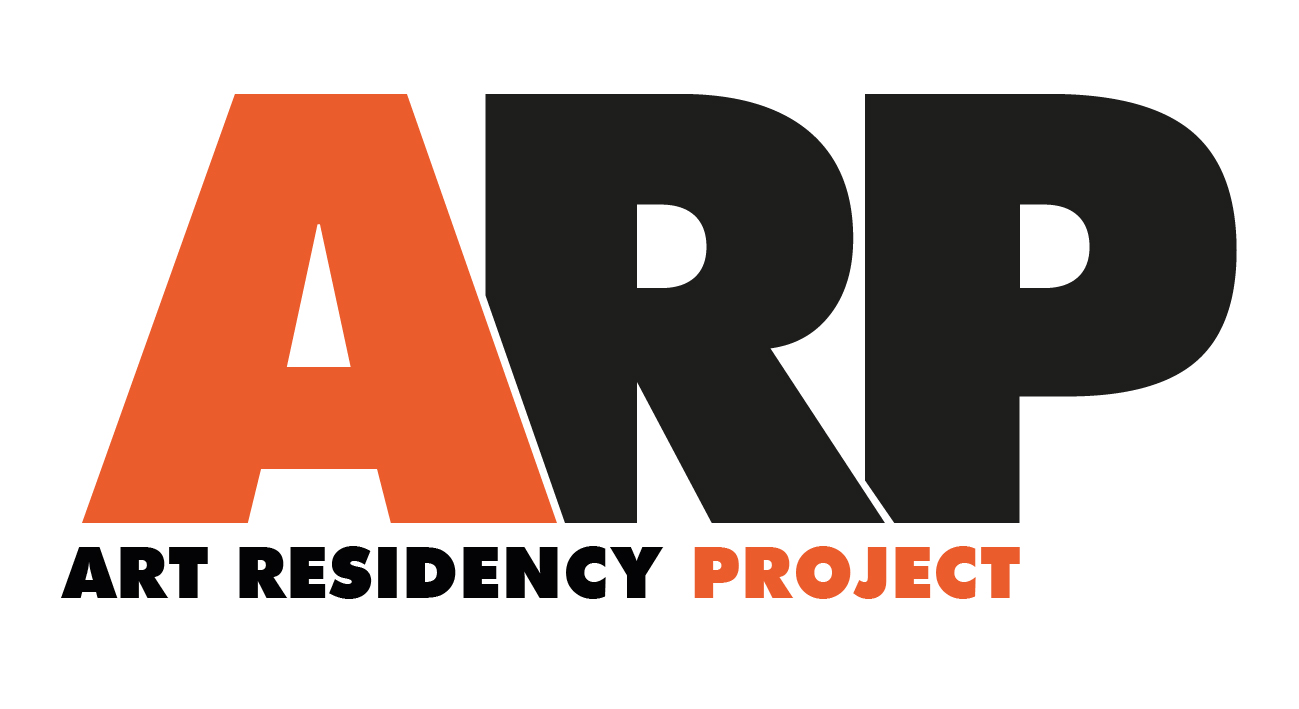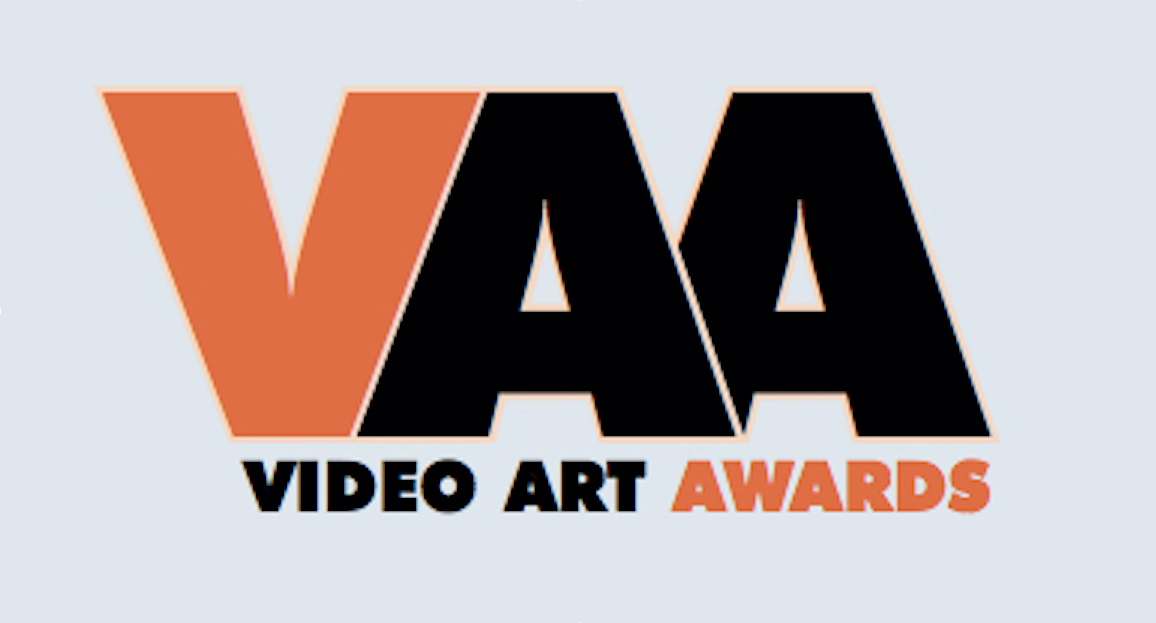Young artists/curators, under the age of 30, from Europe, Africa and the Balkans can participate. Applications by 14 July 2024. Focus of the program, which will take place in September-October 2024, is the Hic et Nunc workshop which delves into the concept of the contemporary with a series of meetings and visits. Return of the residency is the Pack and go circuit which allows the winning artists to show and discuss their work and the curator to create the concept of the events.
Tag: contemporary art
ARP 9Edition. The HIC ET NUNC n.2 workshop continues the investigation into the idea of the contemporary. At the center of the meetings are the 6 winners of the residency program created with the contribution of the MAECI. The final exhibition on 7 October 2023 for the 19th GdC Amaci.
A work that reflects the contemporary to be carried with you in hand luggage. This is the challenge for 5 winning artists and a curator of the ninth edition of the ARP – PACK AND GO competition: a residency-workshop that questions and investigates the notion of the contemporary.
ARP – Art Residency Project is the artistic residency programme, conceived and created by the Luigi Di Sarro Centre, with the aim of promoting a disposition towards intercultural dialogue and the comparison of practices and methods in the world of art too. For its ninth edition it once again proposed the PACK AND GO formula, that is, the challenge of conceiving and creating a work that represents one’s idea of contemporaneity and which is easily transportable to allow maximum mobility.
We live in difficult years and even for artists, especially emerging young people, the slowdown, if not the forced blockade, of social relations created by the covid-19 pandemic, wars and the economic crisis has represented and represents an obstacle. The ARP program has always worked by promoting educational trips, but with this formula it wants to go further and attempt to cross not only geographical borders, but also emotional ones.
It was thought that a project that started from the analysis of the idea of the contemporary would offer fertile ground for returning to dialogue, confrontation, opposition and sharing.
The young artists selected Samela Balazi, Beatrice Caruso, Cheriese Dilrajh, Anna Martynenko and Mirino Mwandiambira and Azzurra Pizzi as curator come from European, Balkan and African countries.
The jury that selects the artists is made up of Alessandra Atti Di Sarro, Simone Ciglia and Carlotta Sylos Calò.
The Hic et Nunc workshop n.2 will be attended among others experts by Angelo Capasso, Simone Ciglia, Heidi Erdmann, Carlotta Sylos Calò, Matteo Piccioni and Alessandra Troncone, curated by Alessandra Atti Di Sarro.
ARP 9EDITION PACK AND GO: the 6 winners. ARP is a contemporary art exchange realized with the contribution of Italian Foreign Ministry.
The jury, Alessandra Atti Di Sarro, Simone Ciglia and Carlotta Sylos Calò, has chosen the young winners who will arrive in Rome at the end of September. The group of winners will participate in the workshop which will investigate the notion of the contemporary. Here you can read the profiles of the winners.
CROSSING BORDERS, a project by Karmen Corak, Fariba Karimi, Gianna Parisse and Claudia Hyunsook Son. From April 15th to May 13th 2023 the work of four female artists from Korea, Iran, Italy and Slovenia to look at today’s world and its aberrations.
Opening 15 Aprile h.18,00.
Four women with different life stories, four artists with various and stratified cultural roots, a choral work that joins the personal and interdisciplinary research of each, thus identifying a common path, in themes, poetics and in the dialogue of practices. A project that ranges between different materials and mediums, but which gives us a unitary thought on the contemporary.
CROSSING BORDERS is a creative dialogue between Karmen Corak (Slovenia), Fariba Karimi (Iran), Gianna Parisse (Italy) and Claudia Hyunsook Son (South Korea), which culminates in a large wall made up of 273 works, assembled by the four artists according to a of visual assonances.
Gianna Parisse writes on behalf of the group: “The project stems from the desire to work together, to formulate a collective project by four female artists of different nationalities, at a time when separations, walls, wars and violence annihilate the our daily life and everything seems to fall into the abyss.
This common work, in the feminine, is expressed with a collective artifact that is made up of small works on paper, an emotional manifesto of combinations and synergies and in the presentation of single works that in a dimension closer to reality, align with the need to defend what is most fragile. Starting from the links between the dominion over nature and its exploitation and the oppression of the fragile and of women with their submission”.
The project is carried out under the patronage of the Slovenian Embassy in Rome and the Korean Culture Center.

Karmen Corak
Murska Sobota, Slovenia, is an Italian artist living between Venice, Rome and Marseille. She studied Graphic Arts in Croatia and Paper Conservation in Italy, Japan and Austria. Photography became very soon her expressive medium, she attended workshops with Rinko Kawauchi and Hans-Christian Schink. She was invited to group and solo exhibitions in Croatia, France, Germany, Japan, Italy, Russia, Slovenia, Spain, Hungary and the USA, receiving international awards in Fine Art Photography in Paris, Malaga and Berlin. Her works are in public collections in Italy, Slovenia and Japan. She developed contemporary art exhibition projects for public and private institutions. Her photography records the constant flow of things and gives them another order of existence. The particular choice of the paper support elevates its aesthetic qualities and its ability to evoke an exile from reality and dislocate it in other sphere of perception.
Gianna Parisse
Rome Italy. Architect, artist with PhD in Architectural Design. She founded the Roman section of Studio Archea, conceiving architectural research from theoretical and design point of view as a relationship between art and architecture. More recently she graduated at the Academy of Fine Arts in Rome in Painting, with a specialization in Technology of paper materials. She participates to exhibitions in Italy and abroad. Reflections on the terrestrial and celestial landscape, on the cartographies, on the perceptive and physical phenomena in which we are immersed, are accompanied by transformations, dissolutions, disappearances of things and nature, or rather circular thoughts between life and death, time and memory. The medium could be different from time to time, from paper and self-produced natural colors, digitally processed images, photography, to shooting with a scanner. Although the paper support, a living, sensitive, impressionable material, is always present.
Fariba Karimi
Tabriz, Iran. Since 2009 she lives and works in Rome. She was trained at the High School of Art in Tehran and graduated in Painting at the University of Art in Tehran, in 2006. Later in 2014 she graduated in Painting at the Academy of Fine Arts in Rome. Since 2003 she has participated to numerous group and solo exhibitions and various artistic events in Iran, Italy and abroad. Her abstract painting comes from the depths, from a mysterious and hidden world, whose contents she draws on through the mediation of the sign. Fast and incisive. A poetic tale derives from it, a lyrical language that takes shape in new forms and new writings. More recently, the incisive graphic and pictorial signs furrow the photographic images of fragments of her body, as if to recall the cancellations that are inflicted daily on Iranian rights and women.
Claudia Hyunsook Son
Graduated in the Pedagogy of Art in Seoul, she went on to complete a specialization in Art Education and degree in Painting at the Academy of Fine Arts in Rome, as well as a masters in the Cultural patrimony of the Church at the Pontifical Gregorian University. She has taken part in numerous solo and group exhibitions in Europe, Asia and the United States of America. She lives and works in Rome and Seoul. Her art creates images in the space where the cultures of the East and West meet. As she works, she experiments with different technique sand methods to add to the physical images the motives that are her inner inspiration. Her images renew them-selves through time, transparency and emptiness, so that through movement the journey of consciousness become endless.
Pannaggi FOCUS Award 2019-2021 curated by Loretta Fabrizi. The winners of the last 3 editions of the Prize for the new generations of Marche artists. May 27 – June 24, 2022.
On display the works of Elena Giustozzi , Serena Vallese and Michele Carbonari , winners of the 2021, 2020 and 2019 editions respectively. Opening May 27th at 6pm .
The Centro, in collaboration with CeSMa (Centro Studi Marche) and in line with its forty-year promotion of young talents at national and international level, welcomes in its exhibition spaces the winners of the last three editions (2019 – 2021) of the Pannaggi / New Generation Award, an initiative of the “Amici di Palazzo Buonaccorsi” organization from Macerata in support of young artists for the promotion of art contemporary in the Marche and in Italy. & nbsp;
The exhibition offers itself as a privileged observatory on contemporary art through the works of three young talents. A three-part exhibition, therefore, which in comparison by work explores the languages of the visual, unravels their different expressive modes, absolutely original in their being modulated on creative scores that each connects to their own existential rhythms. Concretions in forms and images of visions that mark the relationship that is always problematic and always to be built with reality, which however, precisely in its persevering escape from grasp, constantly feeds the horizon of the imagination with new energy. & Nbsp;
Elena Giustozzi (Pannaggi Award 2021) – born in Civitanova Marche (MC) in 1983, lives in Senigallia (AN) – through INSIDE proposes the liquid vision of a microcosm imprisoned in a few centimeters of water that the high quality of the painting and the optical device allow you to live in the fluid and silent depth of a “garden in motion and without end” like cosmic life. < / p>
Serena Vallese (Premio Pannaggi 2020) – born in Giulianova (TE) in 1981, lives and works in Montone (TE) – presents FOGLIA-ME , a cultured and meditated that explores the theme of the fragility of the living made with equally fragile materials such as paper, plaster, poor, cellulose pulp and modulated on the pervasive and absorbent white “dazzling waiting”.
Michele Carbonari (Premio Pannaggi 2019) – born in Recanati in 1980, lives and works in Macerata – with THE LAST IMAGE he develops a figurativeness that speaks of things of everyday life sublimated by the light of painting, capable of giving dignity of singular existence even to the most anonymous and silent objects, revealing “epiphanies of the invisible”.
le opere di Elena Giustozzi, Serena Vallese e Michele Carbonari, vincitori rispettivamente delle edizioni 2021, 2020 e 2019. Opening 27 maggio alle 18.
Il Centro Luigi Di Sarro, in collaborazione con il CeSMa (Centro Studi Marche) e in linea con la sua quarantennale attività di promozione di giovani talenti a livello nazionale e internazionale, accoglie nei suoi spazi espositivi i vincitori delle ultime tre edizioni (2019 – 2021) del Premio Pannaggi/Nuova Generazione, un’iniziativa dell’associazione “Amici di Palazzo Buonaccorsi” di Macerata a sostegno dei giovani artisti per la promozione dell’arte contemporanea nelle Marche e in Italia.
La mostra si offre come un osservatorio privilegiato sull’arte contemporanea attraverso le opere di tre giovani talenti. Un’esposizione dunque a tre voci che nel confronto per opera scandaglia i linguaggi del visivo, ne squaderna le diverse modalità espressive, assolutamente originali nel loro essere modulate su spartiti creativi che ciascuno raccorda ai propri ritmi esistenziali. Concrezioni in forme e immagini di visioni che scandiscono il rapporto sempre problematico e sempre da costruire con il reale, che tuttavia, proprio nel suo perseverante sfuggire alla presa, alimenta costantemente di nuova energia l’orizzonte dell’immaginario.
Elena Giustozzi (Premio Pannaggi 2021) – nata a Civitanova Marche (MC) nel 1983, vive a Senigallia (AN) – attraverso INSIDE propone la visione liquida di un microcosmo imprigionato in pochi centimetri d’acqua che l’alta qualità della pittura e il dispositivo ottico consentono di abitare nella profondità fluida e silenziosa di un “giardino in movimento e senza fine” come la vita cosmica.
Serena Vallese (Premio Pannaggi 2020) – nata a Giulianova (TE) nel 1981, vive e lavora a Montone (TE) -presentaFOGLIA-ME, un lavoro colto e meditato che sonda il tema della fragilità del vivente realizzato con materiali altrettanto fragili come carta, gesso, povere, pasta di cellulosa e modulato sul bianco pervasivo e assorbente “abbagliante d’attesa”.
Michele Carbonari (Premio Pannaggi 2019) – nato a Recanati nel 1980, vive e lavora a Macerata -conTHE LAST IMAGE mette a punto una figuratività che parla delle cose del quotidiano sublimate dalla luce della pittura, capace di donare dignità di singolare esistenza anche agli oggetti più anonimi e muti rivelando “epifanie dell’invisibile”.
A NICCA. Marcela Gottardo and Flavia Monteiro. Curated by Steven Y. Wong. 2019 November, 7th-30th.
A Nicca, refers to a core doctrine of Buddhism that is the idea of impermanence, one that articulates that existence is in a constant state of change. The etymology Anicca is a negation of the root word “nicca” meaning stability and continuity. The works of Marcela Gottardo and Flavia Monteiro are less of a negation of permanence but rather explore the Buddhist concept of Anicca through the instability and transformations of materiality and being. Together they interrogate how we see through the subjective lens of our own knowledge and embrace our destined impermanence, beyond the philosophical and existential crisis of nihilism.
Gottardo employs familiar everyday materials and or themes to create fragmentations of one’s temporal existence and conception of self. These fragments are assembled and treated as unique forms that are in a stasis of decay, yet echo the memory of organic forms and negative space. Gottardo’s work presents material explorations of form, resulting in a survey of art works that evoke an archeological indexing, encouraging a visual unearthing of artifacts.
Monteiro showcases several bodies of works that include suspended cyanotypes that echo garments drying on a clothesline; and also include organic shapes of everyday objects including the shadows of desert flora. Monteiro examines her adaptation to living in a new desert environment by embracing the desert sun and its shadows in the creation of her cyanotypes. These works refute her arid environment through the deep blues inherent to cyanotypes, the liquid process developing these images, and through blockages of the desert sun’s radiation in exposing the cyanotypes. These cyanotypes are also pared with photographs that reinforce the deserts yearning for water. Monteiro contrasts the cyanotypes and photographs with her warm paintings of grids and structures that suggest a containment of not only color, but the specter of fluids enveloping the void. Monteiro’s practice examines ideas of transformation through the visual entropy of structure, documenting ones environment and the desire to contain.
FriedrichWilhelm Nietzsche was critical of Buddhist concept of Anicca, postulating it in opposition to his idea of “will to power”, where he equated the idea of impermanence with nihilism. Gottardo and Monteiro’s works challenge his accusations of the ascetic practice Buddhism (and Christianity) as a “will to nothingness”, through their affirmative exploration of the ever-changing material and environment. Their works speak to their transition of impermanent lived lives within the Brazilian diaspora. Ultimately this exhibition embraces our world’s reality of impermanence with a goal of acceptance of the instable and unknown. (Steven Y. Wong, USA)
Steven Y. Wong was born Los Angeles where he currently is the curator at Los Angeles Municipal Art Gallery. Previously he was Interim Executive Director and senior staff curator at the Chinese American Museum where he developed and implemented both contemporary art and history exhibitions. Steven has lectured at UC Santa Barbara and was an adjunct professor at Ventura College and Pasadena City College in Asian American Studies, History and Art Studio Departments. Steven holds a Masters in Asian American Studies from the University of California, Los Angeles and a Master in Fine Arts from the University of California, Santa Barbara.
Marcela Gottardo was born in Brazil. She lives and works in Pistoia, Italy. Marcela’s artwork utilizes materials and processes to investigate the nature of being and becoming. She received a Master of Fine Arts in 2014, and a Bachelor of Fine Arts in Painting in 2012, at Otis College of Art and Design, Los Angeles, California, USA.

Flavia Monteiro was born in Rio de Janeiro, Brazil. She lives and works in the Coachella Valley desert in California (USA). She explores altered perceptions by continually reworking her artwork until preconceptions and expectations are broken and a transformation is completed. Flavia has exhibited her work in California at Los Angeles Municipal Art Gallery, Palm Springs Art Museum, Vincent Price Museum, The Bolsky Gallery, Los Angeles International Airport, and has created public artworks for the cities of Malibu and Glendale. Her artwork has been exhibited in galleries in Rio de Janeiro and at the Ibero-American Art Salon at the Mexican Cultural Institute (Washington, DC). Flavia earned an MFA from Otis College of Art and Design in 2013, and BA degrees in Art Education and Social Communication. She completed postgraduate studies in Art Therapy. Before moving to the US in 2003, she worked as an Art Educator and developed art education programs at Colégio Pedro II, the Brazilian Federal model school in Rio.
Luigi Di Sarro. Theater in the form of photography, curated by Lorenzo Mango. Italian Cultural Institute Belgrade for the 15th Contemporary Art Day Amaci-Maeci. 3-22 October 2019.
The Italian Cultural Institute of Belgrade presents Luigi Di Sarro. Theater in the form of photography, an exhibition dedicated to Luigi Di Sarro, an artist active in the Sixties and Seventies, a period that today is being brought to the attention of critics for the innovative thrusts brought to contemporary art. The exhibition, organized on the occasion of the forty-year anniversary of the artist’s death in collaboration with the Documentation Center of Contemporary Artistic Research Luigi Di Sarro, is curated by Prof. Lorenzo Mango of the University of Naples “L’Orientale” and will be opened at the Italian Cultural Institute of Belgrade on October 3rd 2019 at 6.30 pm, where it will remain on show until October 22nd.
IIC Belgrade participates with this event in the Day of the Contemporary, promoted by AMACI that in the last editions, with the collaboration started by the Mibac with Maeci, also involves Embassies, Consulates and Italian Cultural Institutes abroad in organizing events for the enhancement of contemporary Italian art and culture.
The inauguration will be preceded by the presentation of the book by Carla Cucchiarelli That night in Rome, a biography of the artist who died prematurely, only thirty-seven in 1979, killed for a fatal misunderstanding in the tense climate of the Seventies in Italy.
The international promotion project linked to the forty years from the death, is inspired by an intuition of the same Di Sarro – who in a pen drawing had indicated places on the terrestrial globe “Rome, New York, Tokyo and … who knows where” -, was promoted and realized in numerous locations abroad and after the Belgrade stop will continue for other exhibitions in the world.
Return. Rome-Berlin The exchange project with Verein Berliner Künstler will exhibit 5 italian artists. Opening 13 September, 6pm.
The project Return Berlin-Rome | Rome-Berlin, born from an idea by Susanne Kessler, promotes the collaboration of Centro Luigi Di Sarro with the VBK-Verein Berliner Künstler and aims to start an exchange between the artistic realities of Italy and Germany, through the dialogue between the two capitals where the proposing associations are located.
Andrea Aquilanti, Angelo Casciello, Veronica Montanino, Pamela Pintus and Sara Spizzichino are the italian artists on show at the VBK-Gallery, from September 13th to October 6th 2019.
The project, carried out in two stages, brought the works of 5 German artists (Birgit Borggrebe, Jürgen Kellig, Susanne Kessler, Nele Probst, Marianne Stoll) to Centro Luigi Sarro in Rome in April 2019.

ARP 7ED – TALENTS EXCHANGE: WINNERS LIST
Giulia Fumagalli and Alessio Barchitta from Italy, Viktoria Nianiou and Salvador Gomez from Spain, Zana Masombuka and Grace Mokalapa from South Africa. The Centro Luigi Di Sarro’s international residency programme, realized with the contribution of the MAECI, is aimed at young U30 artists. Cape Town, Granada and Rome are the Talents Exchange stages, between November and December 2019.
The 7th Edition of the ARP-Art Residency Project will start from Cape Town in November. The residency program for young artists under 30 is conceived and promoted by the Centro Luigi Di Sarro, through an innovative formula that involves several countries.
Talents exchange is an artistic adventure of experimentation and intercultural dialogue that will see a group of 6 artists traveling together first to Cape Town, then to Granada and finally to Rome, for almost 2 months.
The program will allow the group of artists, selected through a competition and by a jury of experts, to undertake a training trip between North and South of the world. The course, consisting of 3 periods of residency in South Africa, Spain and Italy, ideally combines the Mediterranean with Sub-Saharan Africa and acts as a bridge of knowledge between Europe and South Africa, a leading country on the continent for cultural and artistic growth. The winners will have the opportunity to carry out a research project and discuss with the group to set up local events on the way and a final exhibition in Rome in December.
The winning projects of ARP 7Edition range in the different fields of the figurative arts and investigate the most contemporary themes, all oriented to the bet of knowledge.
Over 50 contacts and 38 valid applications came to the selection of the jury composed of: Jake Aikman, Satellite, Cape Town; Alessandra Atti Di Sarro, Centro Luigi Di Sarro; Khanya Mashabela, Art critic, Cape Town; Marisa Mancilla, Facultad de Bellas Artes UGR, Universidad de Granada; Francesco Ozzola, Suburbia, Granada; Carlotta Sylos Calò, University of Tor Vergata, Rome.
ARP 7th Edition – Talents Exchange is realized with the contribution of MAECI – Ministry of Foreign Affairs and International Cooperation and Media Aid Onlus, in partnership with Suburbia Granada, Spain, and Satellite Cape Town, South Africa, and with the collaboration of Rainbow Media NPO.

VAA 2019. The winners are Jabu Nadia Newman with “Untitled:Friends” and Niccolò Masini with “White time”. At Cinema Labia in Cape Town the ceremony, next screening will take place at cortoLovere Festival in Italy.
Screening and Awards Ceremony of the 2 winners and 8 finalists of the VAA-Video Art Awards 2nd edition took place on May 14th at the historic Labia Cinema in Cape Town. Now the VAA screening evening moves to Italy where the cortoLovere Festival will host the event on September 26th at the Tadini Art Academy.
The prize-giving event took place in the historic Cinema Labia, Tuesday 14 May 2019. All the 10 shortlisted works in the two selections (Italian and South African) have been projected.
The VAA – Video Art Awards is designed and promoted by the Centro Luigi Di Sarro with the contribution of Italian Cultural Institute of Pretoria and the International Short Film Festival cortoLovere, where the VAA Top10 will be screened again (23-28 September 2019).

Niccolo_Masini 
VAA_Programme_Screening_Labia
Niccolò Masini CV http://www.niccolomasini.com
He studied in the classrooms of the IED in Milan, graduating in 2011 in Illustration and Animation courses. Thus began his career in the world of visual art. However, the definitive turning point accomplished by moving to the Netherlands, where he attended the prestigious Gerrit Rietveld Academy in Amsterdam, from which he graduated in 2015 with a specialization in Audio Visual Arts. During his time at Rietveld, he has the opportunity to follow an international exchange program at RMIT University in Melbourne. The Dutch experience will open to him doors to several international experiences: Australia, Argentina, the United States, Kuwait and Canada. Winner of numerous international prizes, competitions and residences, from 2016 he began to devote himself entirely to his personal research, which he combined with commissioned work. Practicing in three continents, his work has been exhibited internationally in countries such as Australia, Canada, Argentina, Japan, Holland and Italy. To date, he lives and works between Genoa and Montréal.

“White Time”
“There are a certain amount of ordinary moments in life that are con- sidered neither here or there, these are spaces for otherness, for some considered irrelevant, that are simultaneously physical and mental, such as the space of a phone call or the moment when you see yourself in the mirror.” Michel Foucault
These spaces of otherness are infinite, disposed on time framed dimensions that inexorably passes through, with or without our consideration. The experience of the traveler, consisting of a series of movements within space, producing a phenomenon of a new order, where geography overtakes knowledge. Our conception of spatiality shapes our perception of time, and, on an individual scale, defines our way of perceiving movement. Spaces trace an inventory of the adventure of knowledge, omitting nothing; knowl- edge traces cartography of known lands, omitting nothing. Acting as a prelude to a subjective perception of a suspension in time, White Time is a video installation where a simple figure stands in a not specific dimension. Surrounded by the surface of the black screen different elements interact with each other, mutating through the composition of an undefined spatial location. Niccolò Masini
Jabu Nadia Newman CV https://jabunew.tumblr.com/
Jabu Newman was born and raised in Plumstead, a suburb of Cape Town. She is 25 years old and studied at UCT, University of Cape Town, where she graduated in Political Science and then specialized in Visual and Media Arts, then deepening cinema and directing at the African Arts Institute. He works in film production and continues his artistic research with video art and photography works, mainly oriented to the exploration of human and social relations. He won the VAA award with the video “Untitled: Friends”.

“UNTILED:FRIENDS”
The title Untitled:Friends alludes to the complexity of chosen relationships, specifically how deeply bound two souls who share no family relation can be: a strong connection that no title or description can truly articulate.
Like most of Newman’s body of work, the film specifically focuses on femme binary identity and relationships. The storyline is intentionally centered around femme friendships and simultaneously challenges and celebrates them against a backdrop of a mundane heteronormative neighborhood, where these layered and complex identities are prosecuted and undervalued.
Untitled:Friends was shot, written, directed and edited by Newman over a period of two years and reads like a personal visual diary, in which she invites us into her childhood and teenage years in Plumstead. Come per la maggior parte dei lavori di Newman, il film pone un’attenzione particolare all’identità e alle relazioni nel mondo femminile. Il racconto è volutamente centrato su una storia di amicizia fra donne in cui contemporaneamente si sfida e si festeggia, in una atmosfera mondana, quel substrato di codici di etero-normalità in cui le identità stratificate e complesse sono perseguitate e sottovalutate. Untitled:friends è stato girato, scritto, diretto e montato da Newman nel corso di due anni e si offre come un personale diario visivo, nel quale l’autrice svela i suoi anni d’infanzia e adolescenza nel quartiere di Plumstead. (Jabu Nadia Newman)




